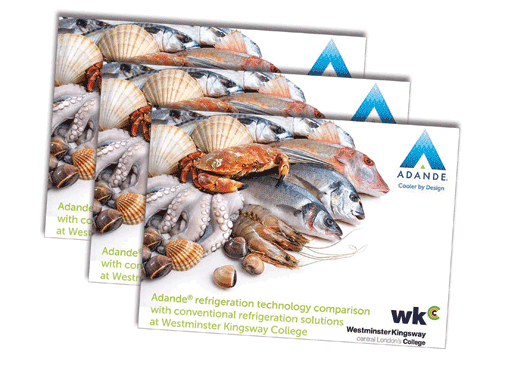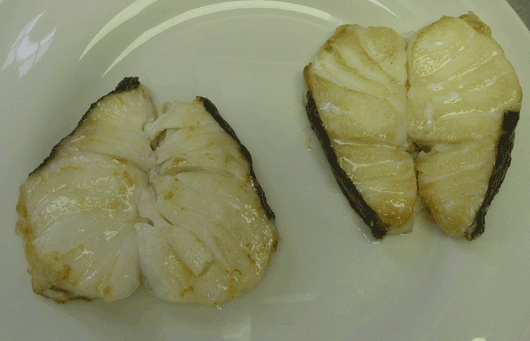
Trials undertaken at Westminster Kingsway College concluded that an Adande refrigerated drawer unit significantly outperformed a conventional under counter door fridge in the storage of fresh fish.
The purpose of the test was to compare the stability of storage temperatures and humidity of the two fridges, to evaluate the effect on the product quality of highly perishable seafood, including salmon, tuna, cod, haddock and prawns. Feedback on the quality of raw and cooked fish was provided by Nicholas Melmoth-Coombs, Executive Chef at Fish! Kitchens.
In 20oC ambient conditions, the storage temperature of both fridges was set at +1oC. For four hours a day, over the three day test period, drawers and doors were opened at regular intervals for a duration of between seven and twelve seconds to simulate a typical kitchen service. The fish species were placed in individual uncovered containers, without ice, and stored in the fridges. Each portion was weighed at the beginning and the end of the trials to monitor weight loss, resulting from dehydration.
Throughout the tests, the Adande unit maintained a stable air temperature of between -1oC and +2oC, which is the optimum temperature for the storage of fresh fish. By contrast, the temperature range of the under counter fridge varied between -2oC and +4oC. Average relative humidity in the Adande was measured at 78%, compared to 82% in the conventional fridge.
At the end of the trials, chef Nicholas Melmoth-Coombs conducted a human sensory assessment, including sight smell and touch tests. The chef reported that the fish stored in the Adande had retained its appearance, whilst product in the conventional fridge had become dull and discoloured. He added that the prawns and haddock stored in the conventional fridge were “unattractive and inedible”.
In terms of the chef’s assessment of the cooked fish, salmon which had been stored in the Adande was said to have a “meaty, sweet flavour”, whist the cooked salmon from the conventional fridge was described as “clearly dehydrated, with a darker surface and a tangy taste”. Similarly, cooked cod from the Adande was described as “succulent”, whereas the sample which had been stored in the conventional fridge was said to be “tough and fibrous”.
The trials also established that the average weight loss, due to dehydration, of fish stored in the conventional fridge was 3.5 times higher than product held in the Adande. Taking into account the reduced yield from shrinkage and the wastage of inedible product, the monetary value of fish stored in the conventional fridge had been reduced by 33.6% at the end of the trial. By comparison, the reduction in monetary value of the fish stored in the Adande was just 1.5%.
Nicholas Melmoth-Coombs, stated: “The difference in the quality of the fish at the end of the trial was really quite noticeable. I could see immediately that fish stored in the under counter fridge was more dehydrated than fish stored in the Adande. When we cooked the fish, we saw consistently better results from the product, which had been stored in the Adande.”
A full copy of the report, detailing the results of the trials, is available from Adande upon request.
For further information call 0844 376 0023, email info@adande.com or visit www.adande.com

The portion on the left had been stored in an Adande refrigerated drawer and the portion on the right had been stored in a conventional fridge.